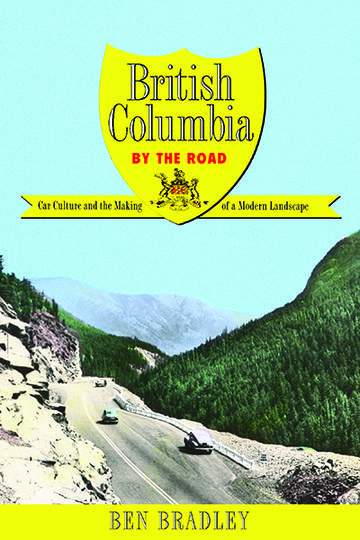In British Columbia by the Road, Ben Bradley takes readers on an unprecedented journey through the history of roads, highways, and motoring in British Columbia’s Interior, a remote landscape composed of plateaus and interlocking valleys, soaring mountains and treacherous passes. Challenging the idea that the automobile offered travellers the freedom of the road and a view of unadulterated nature, Bradley shows that boosters, businessmen, conservationists, and public servants manipulated what drivers and passengers could and should view from the comfort of their vehicles. Although cars and roads promised freedom, they offered drivers a curated view of the landscape that shaped the province’s image in the eyes of residents and visitors alike.
Ben Bradley is a historian of twentieth-century Canada. He is the author of articles about the history of parks, railways, and heritage sites in BC, and co-editor of Moving Natures: Mobility and the Environment in Canadian History.
- Winner, Lieutenant Governor’s Medal, Historical Writing Awards, BC Historical Foundation
Read British Columbia by the Road backwards. Or forwards. It doesn’t matter. Like the highways themselves, you can drive Ben Bradley’s bright, engaging work on automobility, identity, and landscape in British Columbia’s Interior in different directions. Stop to visit an open-air museum or take a picture of a striking vista. You’ll get to where you’re going.
[British Columbia by the Road] succeeds admirably in achieving its goals and it will be of interest to a wide variety of scholars far beyond the bounds of British Columbia … the book is a terrific example of detailed, very placeful historical geographical research which succeeds in connecting western Canada’s particular story with a broader argument about how political imperatives, infrastructure investment, and the new technology of the automobile conspired to shape the economic geographies and place identities of many localities across North America and beyond.
Bradley’s study offers fresh perspectives on tourism promotion, park development, political culture, and public history. Befitting a study focusing on driving’s visual culture, the book has superb maps and photographs … British Columbia by the Road provides a much-needed and sustained analysis of key developments in the province’s interior and is clearly a “must read” for BC historians. For those less engaged and less familiar with the province’s history, it offers valuable and nuanced insights into the political, environmental, and economic history of North America—particularly the regional impact of automobility.
Ben Bradley’s book British Columbia by the Road is a significant contribution to the history of North American automobility … [This] is a highly readable book that can be read not only for its academic merits, but also as a travel book!
Through refreshing and in-depth research, author Ben Bradley … offers up an engaging road trip through time and space, guiding the reader along the twisting, turning, climbing, curated, landscape of the circa 1925 to 1970 British Columbia Interior highway system, where myriad man-made, natural, and historic vistas unfold…. British Columbia by the Road is delightfully interactive, in that the author encourages the reader to slip behind the wheel … [and] an excellent read, [that] serves to shed light on the numerous forces and underpinnings which were at play in the development of the BC Interior highway system.
Bradley shows that a regional focus can be an effective way to connect landscape, environmental, tourism, and mobility history.
One of the ways that we experience our past is by driving through it. We hop into our automobiles and motor through the backcountry, stopping along the way at a wide variety of historical markers, parks, and viewpoints to refresh our memories or learn something new. This “public pedagogy” goes a long way to informing the ideas we have about our province’s history and it is the subject of Ben Bradley’s new book … British Columbia by the Road is refreshingly free of jargon and smoothly written; it also presents a thought-provoking new perspective on the history of B.C.’s interior.



